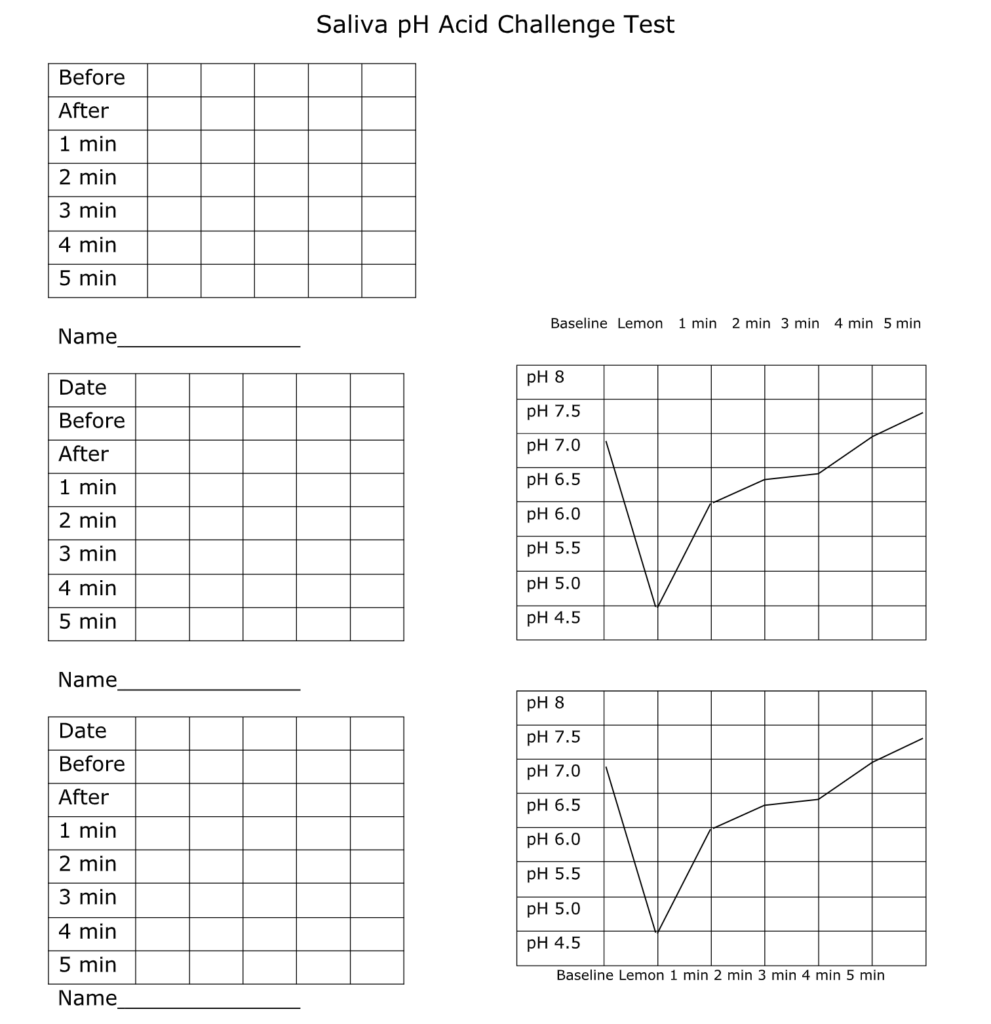This is the only valid test for chronic metabolic acidosis. Salivary and urinary pH tests are not reliable tests because they fluctuate with when and what we eat and/or drink or how much we exercise, etc. This tends to give false pH readings. The blood has to stay in the range of 7.35 and 7.45 to maintain proper health, however to read this narrow of a range off of paper is very difficult. However, if you test your urinary pH regularly, and your pH is above 7.0 on a regular basis (a couple of times a day) it can be assumed that your pH balanced. This is the ACID TEST!
This test uses diluted lemon juice to monitor bicarbonate mineral reserves and tests if your pancreas has the ability to keep your pH balanced.
Test Procedure
- It is best if you do not drink or eat anything for two hours (approximately) prior to taking the test. The best time to test your self is first thing in the morning.
- Tear off 7 strips of pH paper, each about 2″ long. Lay out on tissue.
- Measure out (and have ready in a cup) 1 tbsp. of lemon juice mixed with 1 tbsp. water.
- Make a pool of saliva in your mouth. Dip 1 end of the strip of pH paper into the pool and wet it. Do not suck on strip -‐ just wet it. Remove and compare color immediately. (Strip will darken with time so compare immediately.) Compare color of the pH paper against the pH scale provided and record the result as a baseline in the attached chart.
- Quickly sip down the lemon juice mix in 4 sips, with a quick swish with each sip. As soon as the whole 2 tbsp. of mix is swallowed, test pH again and record (in the lemon column in the attached chart), and also start timer.
- For the next 5 minutes, one minute apart, test the saliva with the last 5 pH strips. Record each reading on the attached chart. After you have finished recording your results, put a mark for each result on the appropriate location on the graph, draw a line, connect the dots, and compare your results.
Repeat this test five times. If you fail the pH Acid Challenge, call our office to set up a consultation. We will go over the chart results, interpret the results, and formulate a plan to manually balance your pH until the pancreas recovers bicarbonate reserves.
Everyone’s metabolism is different; most people will not respond to the acid exactly the same way. However, if your pancreas can secrete enough bicarbonate to handle the acid, your pH will correspond proportionately with the chart. If your pH does not drop down to 4.5, you have chronic acute metabolic acidosis (the liver is in ammonia cycle) or you have chronic metabolic alkalosis. Either way, it needs to be rectified. (The only time I have personally seen the alkalosis condition is with a raw vegan diet.)
You actually do not have to balance the pH of the body; the pancreas balances the pH of your body. However, with chronic metabolic acidosis the pancreas has lost the ability to keep the pH balanced.





